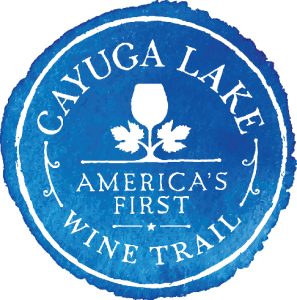Frontenac Island
The Original Allure of the Finger Lakes Region
by Mel Russo
Today, people come to the Finger Lakes area to gaze at its unequivocal, scenic beauty and its wealth of both civilized and natural history. In addition, they come for a pleasing retirement, vacation, and perhaps for regional employment – sometimes locally – and often with people working in different directions at one of several cities within an hour or so. In the Finger Lakes area, there exists the unique opportunity to live ‘on vacation’ when just visiting or more simply, coming home from work.
This was not always the case, however. For no good reason, other than the random discovery of an abundance of food sources, people settled here more than 5,000 years ago. It all started about 60,000 years ago, when several different bands of early humans crossed the Bering Strait over dry land or ice from northeast Asia and northern Japan to what is now Alaska. This was during the most recent ice age, when much of the fresh water of the northern hemisphere was spread over more than half of the continent as part of the last glacier. It is thought that the stalking of various proboscidians, like mammoths and mastodons, led them to the new continent. Once here, they traveled south down an ice-free corridor along the Pacific Coast. Thousands of years later and after the invention of fluted spear points, then unique to North America, some of the various bands of people ended up in what is now New York State. This new arrival of primitive people to New York was facilitated by the recession of the glacier and Lake Iroquois, an oversized Lake Ontario that extended into the lowly elevated Cayuga Lake Basin. This giant lake persisted for several thousand years until about 8,000 years ago when the Arctic ice caps began reconstituting, opening up more rich, dry land around the Great Lakes for habitation by terrestrial life.
About 5,500 years ago (3500 BC), one of the bands of wandering people settled in the Lamoka/Waneta Lake area (Lamoka people), between the south ends of Keuka and Seneca Lakes. About 1,500 years later (2000 BC) a different group settled at the foot of Oneida Lake and on the Oneida River. This group was known as Brewerton people. There was also a Geneva site (2,400 BC) but much of its documentable history was lost to early road excavations. Sometime within these eras, however, a third group settled on Frontenac Island (3,000 BC), a limestone base island at the northeast end of Cayuga Lake. Each of these sites was lush with fish and game for these earliest New Yorkers. On Frontenac, the people savored bullhead, perch, sunfish types, and pike while feasting on their main staple, the white-tailed deer. Other foods of significance included bear, elk, squirrel, turtle, woodchuck, raccoon, turkey, and passenger pigeon (now extinct).
Through detailed analysis of the artifacts found on the island, it was determined that the ancient, tiny Frontenac population had assimilated the culture and individuals from both the Brewerton people and the Lamokans. Several tools, traditions and cranial types were the same as found in the other sites. Other items appeared for the first time in New York State history on Frontenac Island.
From further analysis of skeletons, especially skulls that were exhumed at the three New York prehistoric locations, it was determined that each ancient site had its own, characteristic, differentiated form of human. However, hybrids with the islanders and those from the two other sites were found for the first time, right here on this small island in Cayuga Lake. It appears that at a later date in their existence, these advanced stone-age Cayuga County people were peacefully and commercially interacting with the other groups of the greater region. At other times in the human habitation history of Frontenac, however, it was certain that warfare played a role in assimilating the individuals, tools, and customs of other groups into the camp. Some items excavated came from as far away as Lake Superior, some 500 miles away.
The islanders kept a bald eagle, presumably used for hunting. Dogs were also used in hunting. Remains of a terrier-sized dog found were similar to those dogs found at the Lamoka Lake site. However, again, for the first time in New York State history, a larger, collie-sized dog was found among the Frontenac people remains. The Frontenac canines were occasionally buried with humans, but some of the dogs had their own, special gravesite with obvious devotion and respect for the animals.
Indeed, life on Frontenac Island must have been somewhat adventuresome in 3,000 BC. Individuals were found buried with broken limbs, head trauma, and spear points embedded in their skeletons. It is intriguing to think that while the ancient Egyptians were building pyramids, raising wheat, and sheep, using metals, writing hieroglyphics and rolling things around on wheels, the people on Frontenac Island in Cayuga Lake were having a big time hunting, fishing, gathering, fighting, dragging things around, using stones and bones for tools, assimilating, and eventually socializing in a pleasant place still visible in Cayuga Lake. The peaceful magnetism of the area continues today.
In 1859, nearly one third of the island was removed for use as an embankment for the nearby New York Central Railroad along the east shore of the lake without regard for artifacts. In the mid-20th Century, the island was scientifically excavated for study and display by the Rochester Museum of Arts and Sciences.
Source: Ritchie (1965)
Top-Tier Supporters of the Cayuga Lake Scenic Byway, Inc. Enjoy the Ride!














